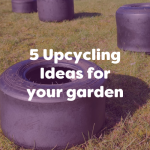
What is a minibeast?
A minibeast, creepy crawlies, insects and bugs are quite literally a small animal. They are defined as “invertebrates” which means that they don’t have a skeleton inside their body. This often means they have other forms of protection such as shells or hard coverings called “exoskeletons”.
Some of the more commonly known types of minibeast are spiders, bees, butterflies, snails, worms, centipedes and caterpillars but there are actually around 25’000 different types of minibeast living in the UK!
How do minibeasts help the environment?
Although they are small, minibeasts play a large role in different ecosystems and humans actually depend a lot on these little creatures! Here are some of the reasons these creepy crawlies need protecting:
- They are a source of food for other animals which means they play a big role in the food chain
- They are decomposers! Without them, natural waste from animals and plants would build up around us
- They help to create everyday products. For example food colouring from bugs, silk from silkworms and honey and beeswax from bees!
- They contribute to plant pollination which is a crucial part of fertilisation for plants to grow fruit and seeds
Where do minibeasts live?
Minibeasts can be found almost anywhere, from rivers and ponds to woodlands and forests and even your back garden. Each unique minibeast will have its own habitat which is suited to their particular needs for survival.
Why not use our free downloadable minibeast spotter and head into the great outdoors with the little ones to see how many creepy crawlies you can find!
How to create a minibeast hotel in 3 steps…
1. Shelter

Shelter is the first key element in creating a minibeast haven and requires very little work. Minibeast will happily set up camp anywhere that offers small nooks and crannies for them to create their habitat.
To create your own minibeast habitat you could invest in a readymade minibeast hotel. Or use crates or boxes to create your own using bits of nature collected from a walk. Wood, leaves, hay and old toilet rolls are fantastic for creepy crawlies to set up, lay eggs and raise their young.
2. Flowers

Having flowers continuously in bloom is a good start as this means that pollen and nectar is readily available.
The more colourful the flowers, the better. Not only does this makes your garden look lovely but the brighter the flower, the more nectar and the more minibeast will be attracted to it!
3. Food and drink

Finally, providing food and drink is crucial if you want to attract and keep the creepy crawlies in your garden. Again this is fairly simple, if you have fruit trees then simply leaving the fallen fruit on the ground is sufficient. Or get rid of your leftovers by adding your apple cores and banana skins into a compost pile in the garden. Compost is not only great for your plants but provides a tasty buffet for all the creepy crawlies.
Try adding a little terracotta pot into your bug haven to gather rain water for the creepy crawlies to drink. Or plant plants like Lady’s mantle whose leaves collect rainwater and morning dew to give insects something to drink.

Once you have created your haven it won’t be long until you start to see creepy crawlies checking into your bug hotel. See how many different types of insects you can spot and share your discoveries with us by using the hashtag #explorewithEYR


